Graphics Design
Top 5 Free 3D Design Software Programs

Top 5 Free 3D Design Software Programs
Here’s an overview:
-
3D design software introduction
• Advantages of Open Source 3D Design Software
• 5 Best free 3D Design Software programs
• 1. Blender
• 2. SketchUp Free
• 3. TinkerCAD
• 4. FreeCAD
• 5. OpenSCAD
• Techniques for Selecting The Correct 3D Designing Software
• Conclusion
• 3D design software introduction-Top 5 Free 3D Design Software Programs

To me, the 3D design software world has always been something mysterious and even thrilling. Creating intricate designs, transcending time and space, brings forward a true wonder that is driven by the virtual world. In this case, many people might have the initial perception of 3D design software as being complex. But, when you have the right tools and you use them regularly, it would not take much time for you to grasp the fundamentals and then you can move on to create own brilliant pieces of art.
Getting into the nitty-gritty of designing in the top 5 free 3D design software programs utilizing different software platforms is where you begin. The programs usually have individual features and functions, hence whether you are a novice or an expert, the right one for you will have all the appropriate features. If you are a newcomer or an expert 3D designer, then there is a software designed for you.
One of the most charming aspects of the top 5 free 3D design software programs is that users can select different alternatives with different levels of complexity. They contain a huge amount of devices and techniques which are capable to watch your fantasy become reality on a budget. The free 3D design software seems the right fit, as it is good for both the beginners as well as hobbyists who want to boost their creativity.
Later on, I will inform you about some of the best top 5 free 3D design software programs that you cannot afford to miss. The diversity of the 3D design software industry ensures that from the easy-to-use options to the more advanced tools there is something for everyone. Then, we are going to plunge into the fascinating 3D design universe for the next topic!
• Advantages of Open Source 3D Design Software.
• Cost-Effective:
One of the major advantages of employing top 5 free 3D design software programs is that it is cost efficient. As a designer, I can craft appealing 3D models at low cost since I do not have to purchase expensive software licenses.
• Accessibility:
Nowadays, the abundance of the top 5 free 3D design software programs makes it an available tool to both beginners and professionals. I can either be learning as a student and an experienced designer, all I need to do is to access these tools that have no financial costs.
• Learning and Skill Development:
The use of free 3D model software helps me to sharpen my skills and learn even more advanced techniques without bearing any extra expenses. I can have hands-on experience with various features and functions which will make me better at 3D modeling.
• Community Support:
One of the best features of most top 5 free 3D design software programs is the active online communities where I can connect with others, ask for advise, or share my work. In addition, this sense of being among friends is very important in my learning and allows me to get valuable feedback on my designs.
• Flexibility and Customization:
Many of the top 5 free 3D design software programs come with a high degree of flexibility and a wide range of customization options. I find the software a good fit for my particular requirements and the working process, which for me means a more customized and time-productive design experience.
This is where top 5 free 3D design software programs stand to benefit, giving designers who want to explore 3D modeling world an affordable option.
• 5 Best free 3D Design Software programs.

By surveying the market, I have prepared a top 5 free 3D design software programs and now I suggest that if you want to be part of 3D world, you should try these software programs.Here they are:
- Blender: Blender is the best 3D design software that blends well both for the beginners and the advanced users. It comprise of diverse sets of tools for construction, texturing, lighting, and rendering, all of which make it perfect for the production of beautifully rendered 3D models.
- Tinkercad: Tinkercad is the simplest 3D design software at the moment and therefore it is absolutely perfect for those people who has never experienced 3D modeling. It provides to its users the Drag & Drop handiness, thus enabling them to easily come up with basic 3D designs. Such software can be used for educational reasons, particularly learning, and a quick prototype.
- Sculptris: If you are digital sculpt newbie, Sculptris is what you exactly need to start with this 3D art. It would give you the chance to precisely model the organic shapes and figures with less effort saving you timecreating the 3D model in a hands-on way.
- FreeCAD: FreeCAD is a siparametric 3D modeling software that is good for making prototypes of the objects in real life of any size. It is a program that has toolboxes for mechanical engineering, product design and architecture. Hence, it is a multi-purpose option for 3D computer aided design.
- SketchUp Free: SketchUp Free is an online 3D designing software tool that’s designed specifically for purposes of architectural and interior design projects. It provides a basic user-friendly modeling interface with a wide of features for building complex 3D models.
These 5 free the top 5 free 3D design software programs tools can handle different levels of skill and variety of needs, so go ahead and experiment with each to find which works best for your projects.
1. Blender
When it comes to the most full-featured free top 5 free 3D design software programs, Blender of course wins without a doubt. undefined
- Versatility: To me, Blender is a multipurpose tool that facilitates designing for different purposes – modeling, animation, simulations, and rendering.
- Open-Source: Since, Blender ensures the open-source nature, numerous developers are always updating and enhancing it to provide the best service. Thus, the solution is kept on top of the trends and is imaginative.
- Modeling Tools: Blender equipresh my toolbox with varied sculpting tools that makes the process of designing intricate top 5 free 3D design software programs objects simple. Todo el Maquinario desde modelado a texturing, Blender tiene todo lo que necesito para llevé mis diseños a la vida.
- Animation Capabilities: Blender animation plug-ins contain a wide range of tools that are user-friendly. I am capable of complicated animation, I can make a rig, and simulation of physics is also in my reach with this software.
- Rendering: Blender’s renderer produces good quality images with wide range of animation applications. Regardless of the type of work whether it’s architectural visualizations or character designs, Blender always remains to be the software with the most advance rendering capabilities.
- Free Tutorials and Support: A blender has one of the largest community of users who are always ready and eager to offer assistance and share their knowledge. Not only can the internet be accessed with a lot of tutorials that were helpful in teaching me to cope well with the software.
The all-encompassing tools and capabilities that blender is endowed with land it one of the interesting software application to anyone who wants to explore the top 5 free 3D design software programs world. From a topology professional to a novice, Blender opens up a lot of scope for you no matter what level you are in.
2. SketchUp Free
This top 5 free 3D design software programs is fantastic because its user-friendly interface and strong features create a great environment to design. undefined
- User-Friendly Interface: With SketchUp Free, everyone can get into 3D design creation, thanks to the platform’s simple and easy to understand interface. This means it is easy for the beginners to click and start creating 3D designs without feeling irritated neither overwhelmed.
- Online Platform: Which makes Sketchup free an online tool, I can use it to access my projects from any other device with a connection to the internet. I adore this characteristic because it provides me with great effectiveness and convenience as I can work on my project from anywhere at any given time.
- Basic Features: While the SketchUp Free is a free version, yet, it also retains a noticeable selection of basic functions for creating 3D models such as the drawing tools, shapes, and textures. Their capabilities suit this purpose as well as for beginners.
- Community Support: SketchUp boasts a huge user community who are all very active in sharing helpful tips, tutorials, and resources online. Having such a system making you are unbeatable when seeking to hone your hands and acquire new methods of craftmenship.
- Integration with 3D Warehouse: 3D Warehouse integration is also one of the great abilities in SketchUp free version, where I can download ready-made 3D models from this library for free. This benefit will make me no longer need to create designs from scratch. I will simply save time and energy.
Conclusively, one can affirm that SketchUp Free is the best option for novices and enthusiasts to commence with venturing into the top 5 free 3D design software programs world. Firstly, the interface of CAD software is user-friendly, it runs on the internet, it offers basic tools and features and it has a community where 3D models can be uploaded to the 3D Warehouse for others to use.
3. TinkerCAD
When I am thinking of examples of user-friendly top 5 free 3D design software programs, then TinkerCAD is one of the first programs that pops into my head. undefined
- Intuitive Interface: Tinker CAD’s interface is user-friendly and straightforward, making it an excellent choice for beginners who are venturing into this new dimension. The method incorporates the drag-and-drop feature in which the objects are placed and move easily.
- Online Platform: Being web-based software, it is nice that I can use TinkerCAD service from any device having an internet access. I also like the fact that I can create, edit, and browse my designs without downloading or installing anything on my device.
- Variety of Design Tools: Simplicity works here too; I get the chance to create complex top 5 free 3D design software programs using TinkerCAD. I can change the simplest elements to the most complex details easily.
- Educational Resources: TinkerCAD not only is the powerful designing tool, but also the exceptional teaching and learning platform. As the site contains tutorials and lessons, my skills and knowledge in 3D design will be boosted through the software as well.
- Collaboration Features: Collaboration is very real with TinkerCAD, as I can take my designs public for feedback or work on projects with my friends in real-time. This refers to group projects or online classes and is most useful for them.
To Wrap things up, TinkerCAD is a multifunctional and handy top 5 free 3D design software programs that can be used by newbies as well as experienced users. Its user-friendly interface, online availability, various tools, educational resources, and collaboration capacities make it not a to miss experience for anyone who wants to venture in this 3D design.
4. FreeCAD
I had a delightful opportunity to use FreeCAD, which is a powerful open-source parametric 3D modeler which is used widely for product designing and mechanical engineering. undefined
- User-Friendly Interface: As for FreeCAD, it’s simple and intuitive GUI greatly simplifies the learning process for beginners as they get familiar with 3D modeling.
- Parametric Modeling: One thing that differentiates FreeCAD from the crowd is that it has parametric modeling feature. It implies that variation of the design is automatically distributed over the entire model.
- Modular Architecture: The modular structure of FreeCAD provides for customization of the program through plugins and modules by adding the extra features demanded by the user.
- Extensive File Format Support: I acknowledge that FreeCAD facilitates importation/exportation of different file types (e.g., STL, STEP) for use in other software.
- Design History: This program allows me to save design history and works out the previous stages without any problem.
- Community Support: The FreeCAD community is active, you can track your progress by watching the tutorials and forums about problem-solving and ideas sharing.
As a summary, FreeCAD plays a significant role as a powerful tool for top 5 free 3D design software programs and is especially useful within the engineering and product design fields. The software has the features, ease of use, and the open-source nature which makes it a preferred option for both newbies and veterans of the work area.
5. OpenSCAD
OpenSCAD, is a weird app, that uses the scripting language to create 3D models. undefined
- Parametric Modeling: Using OpenSCAD, I can quickly define the parameters and then just make the dimensions adjustments. This feature enables the designers speed up the design process and the capability to set these into effect immediately.
- Scripting Language: The script that OpenSCAD uses to define the 3D models is rather easy and quick, and makes it possible to automate repetitive tasks as well as customize the design to fit specific needs. It allows me to make all the decisions regarding my product as I see fit.
- Solid Modeling: OpenSCAD is used to make solid 3D models through the constructive solid geometry method. It gives exact and correct designs. Combining simple shapes is no longer a mystery to me and I can create a variety of objects.
- Cross-Platform Compatibility: Open source in its nature, OpenSCAD is supported on multiple platforms, such as Windows, Mac, and Linux. With this the system enables me to work over the designs using different devices without any hiccup.
- Community Support: OpenSCAD community is a good and lively bunch of users providing all kinds of help including tips, tricks, and resources. This community-focused methodology offers me the opportunity to acquire useful and helpful ideas and handle any problems that I may encounter while utilizing the software.
Finally, OpenSCAD thus provides a special way of top 5 free 3D design software programs process by using both parametric modeling and scripting experience. Solid modeling is at its core, cross-platform compatibility is provided, and a vibrant community support are all the benefits making it a critical tool for creation of precise and customizable 3D models.
• Techniques for Selecting The Correct 3D Designing Software.
Often, choosing the perfect top 5 free 3D design software programs for your projects entails settling for a few factors to determine whether you are making the right choice or not. undefined
- Define Your Needs: Before selecting a design software from the crowd you need to well formulate the list of forecasted demands. Take into account the kind of projects that you’ll be involved in, the level of details, and the specific features you must deal with.
- Ease of Use: Choose a software with a great user interface and that has tools which suit your skill level. A user-friendly top 5 free 3D design software programs can help your work more efficient and produce better results.
- Compatibility: You want to make sure that the top 5 free 3D design software programs you select is able to read files you commonly work with. This will ensure appropriate operation within different programs that import or export files as well.
- Available Resources: Look for software which has a number of educative materials like tutorials, forums and user support. This interaction with authenticated resources will help you to master this tool quicker.
- Cost Considerations: Unlike these free top 5 free 3D design software programs packages, some ones might have a some sorts of limitations or need an extra upgrade for more advanced features. Go through your budget and ponder whether the price is commensurate with the product’s features.
- Trial Versions: It is advisable to carry out a test run with trial versions of the top 5 free 3D design software programs before making a final decision. This way, you can assess whether the software runs as you intention or not.
Note these aspects and you will be able to select a top 5 free 3D design software programs that aligns with your project and workflow.
• Conclusion.
I have been gone through the top 5 free 3D design software programs brief description of which might be able to help you to bring your fantasy works to reality. All of these programs provide a variety of design options and their features are intended to help designers who need different design functionalities and who are at different levels of artistic skill.
Undefined:-
- Blender: Accessible and comprehensive 3D development package that blend power and ease of use.
- Tinkercad: An excellent choice for beginning users or instructors who are able to create a 3D design and access it through an easy to use interface.
- Fusion 360: Superb for product design and engineering due to its functionalities to create accurate model and work together.
- SketchUp Free: Work with your architectural and interior design projects doing so easily with its intuitive tools and great 3D warehouse.
- FreeCAD: An example of a versatile parametric 3d modeller that is mostly used in mechanical engineering and product design.
Whether you are an amateur, a professional who would like to improve the skills, or just a person who is interested in 3D design, listed free top 5 free 3D design software programs may help you a lot. Therefore, install all of the programs listed above and bring your 3D design skills to the next level right now.
Graphics Design
Top 10 Best Graphic Design Tools for Beginners in 2025 (Free & Paid)
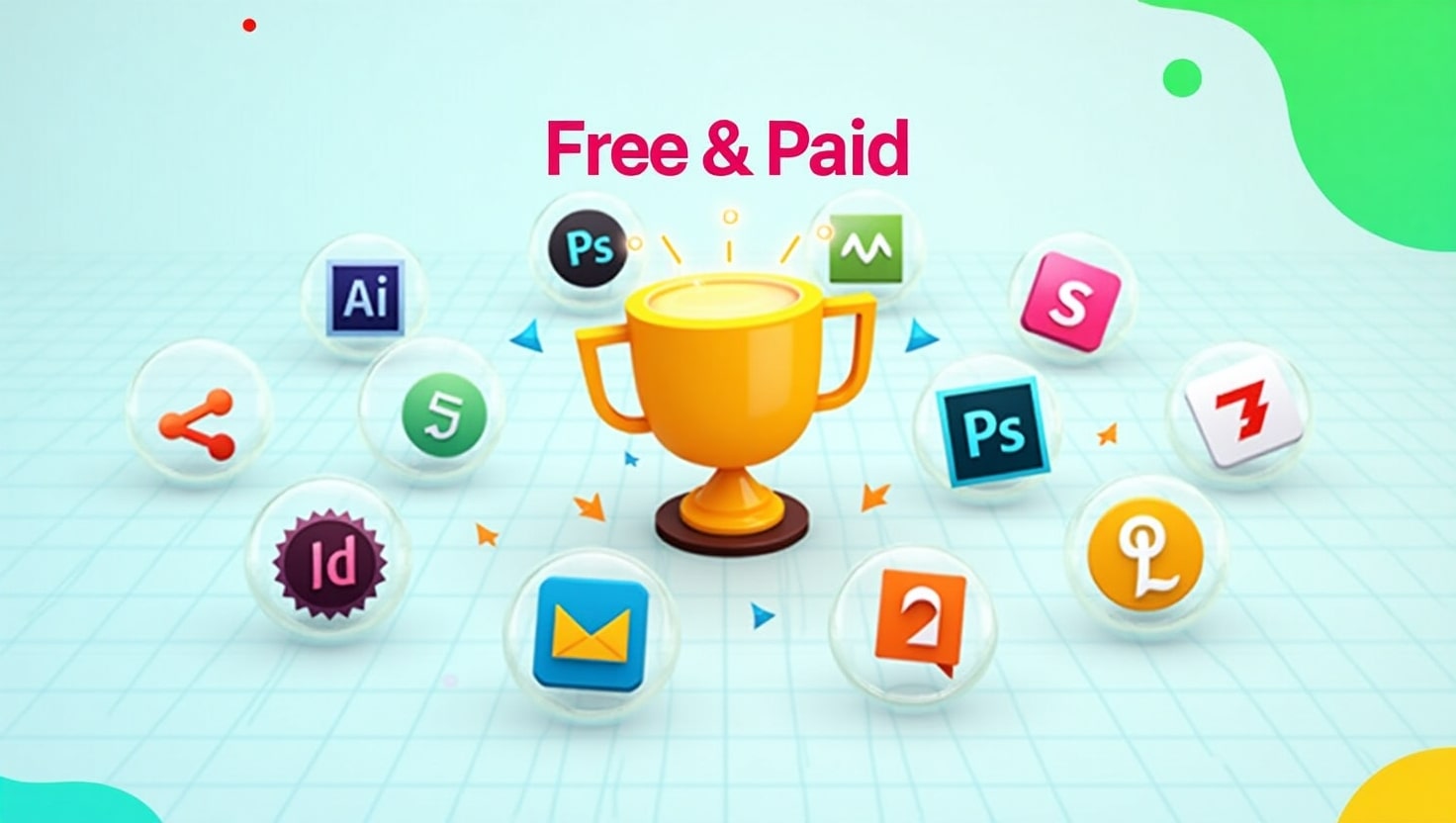
Top 10 Best Graphic Design Tools for Beginners in 2025 (Free & Paid)
Introduction: Why Beginners Need the Right Tools
Best graphic design tools for beginners can be exciting but also overwhelming. With so many tools available, it’s easy to get lost in the options. As a beginner, you need graphic design tools that are easy to learn, affordable, and feature-rich enough to help you grow. Whether you’re designing logos, social media posts, or website graphics, the right software can make all the difference.
In this article, we’ve handpicked the top 10 best graphic design tools for beginners in 2025, including both free and paid options. Whether you’re looking to go pro or just explore your creativity, there’s a tool here for you.
1. Canva – Best for Simplicity
Type: Free & Paid
Platform: Web, iOS, Android
Canva is best graphic design tools for beginners who want to dive into design without the steep learning curve. With drag-and-drop features, pre-made templates, and an intuitive interface, Canva allows anyone to create professional-looking graphics in minutes.
Key Features:
- Thousands of free templates
- Easy-to-use interface
- Perfect for social media posts, presentations, and posters
- Team collaboration options
Why it’s great for beginners: You don’t need design experience to use Canva. It’s as simple as choosing a template and customizing it.
2. Adobe Illustrator – Industry Standard

Type: Paid (Free trial available)
Platform: Windows, macOS
If you’re serious about pursuing best graphic design tools for beginners professionally, Adobe Illustrator is the go-to tool. It’s used by top designers around the world for creating logos, icons, typography, and complex illustrations.
Key Features:
- Precision vector design
- Integration with other Adobe apps
- Extensive typography tools
- Custom brushes and effects
Why it’s great for beginners: Though it has a steeper learning curve, beginners can start with tutorials and gradually master this powerful tool.
3. Figma – Collaborative Design

Type: Free & Paid
Platform: Web-based (with desktop apps)
Figma is a browser-based UI and best graphic design tools for beginners that’s widely used for interface design and collaboration. It’s especially ideal if you’re working in a team or planning to get into UX/UI design.
Key Features:
- Real-time collaboration
- Cloud-based autosave
- Works on any platform
- Design + prototyping in one tool
Why it’s great for beginners: It’s free to get started and encourages team-based design, which is perfect for learning in a group setting or classroom.
4. Gravit Designer – Browser-Based Versatility
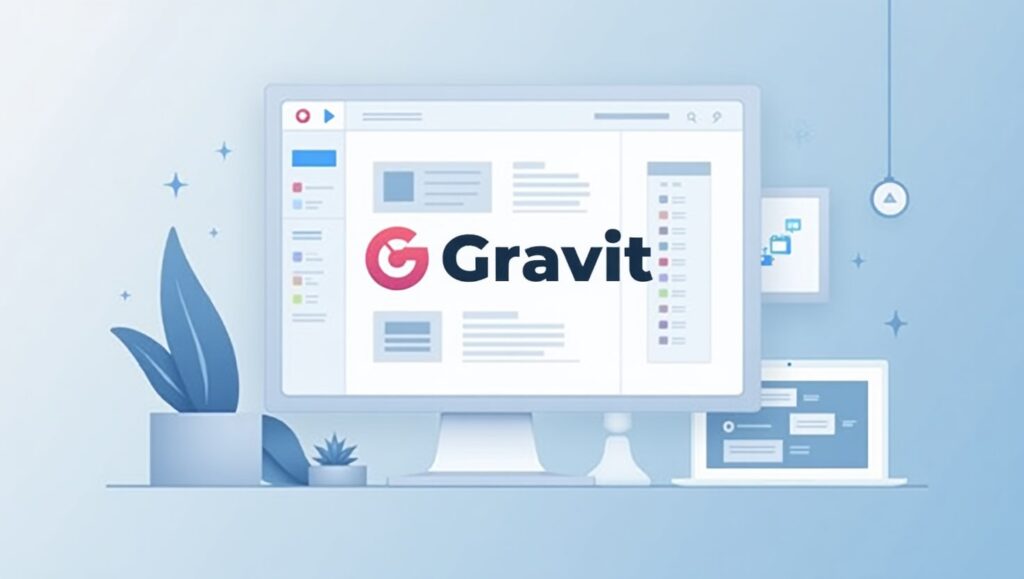
Type: Free & Paid (Gravit Designer Pro)
Platform: Web, Windows, macOS, Linux, Chrome OS
Gravit Designer offers a clean interface with essential tools for vector design. It’s ideal for creating UI designs, presentations, and illustrations, all from your browser.
Key Features:
- Works online and offline
- Modern user interface
- Cloud syncing
- Easy export options
Why it’s great for beginners: The learning curve is gentle, and it doesn’t require a powerful computer to run.
5. Vector – Free Vector Tool
Type: Free
Platform: Web, Windows, macOS, Linux
Vector is a completely free vector graphic design tool with a simple interface. It’s great for basic logos, icons, and infographics.
Key Features:
- Real-time sharing
- Simple and clean interface
- Free tutorials available
- Lightweight and fast
Why it’s great for beginners: Best graphic design tools for beginners without getting overwhelmed by advanced features.
6. Inkscape – Open Source Alternative
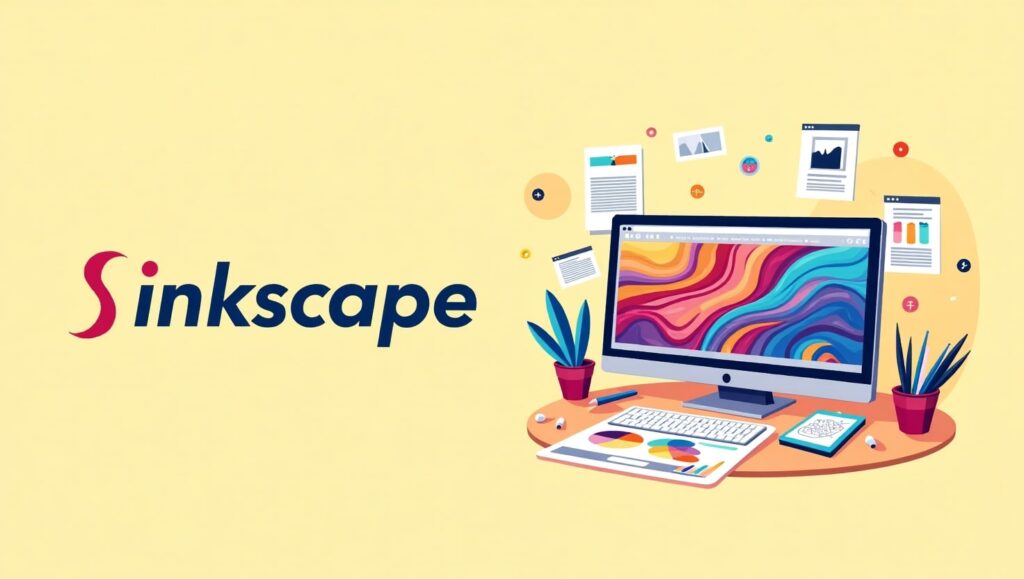
Type: Free (Open source)
Platform: Windows, macOS, Linux
Inkscape is a powerful free vector graphics editor that’s often compared to Adobe Illustrator. As an open-source tool, it has a strong community and regular updates.
Key Features:
- Advanced drawing tools
- Layer support
- File compatibility (SVG, AI, PDF)
- Custom extensions and add-ons
Why it’s great for beginners: Great for those who want full control over their design tools without paying for software.
7. Affinity Designer – Professional Quality at One-Time Cost
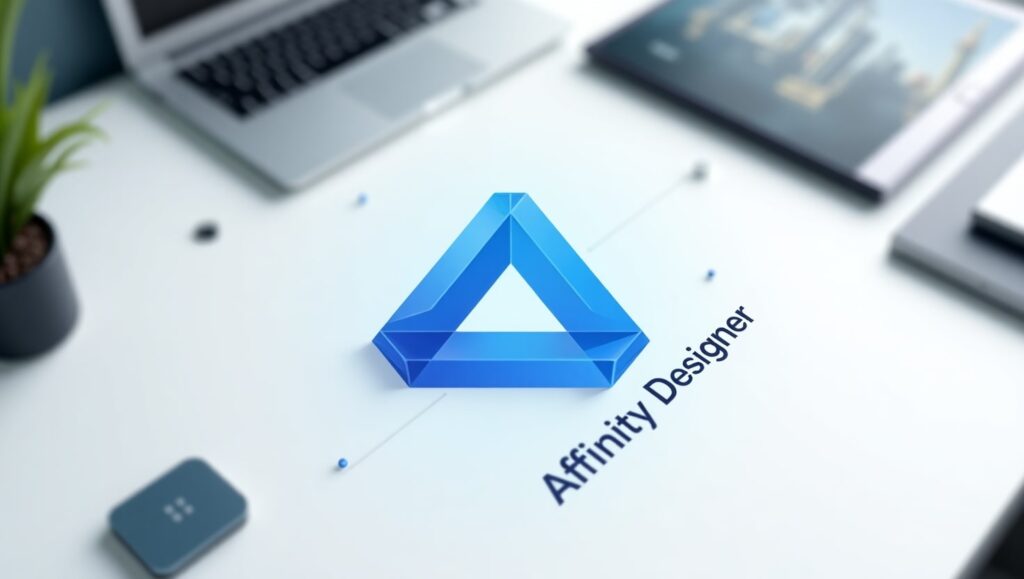
Type: Paid (One-time purchase)
Platform: Windows, macOS, iPad
Affinity Designer is a cost-effective alternative to Adobe Illustrator, offering professional features at a one-time price.
Key Features:
- Smooth vector and raster integration
- Responsive and lightweight
- Grid, snapping, and alignment tools
- Cross-platform performance
Why it’s great for beginners: Once purchased, you get lifetime updates. It’s a great investment without a subscription.
8. Pixlr – Easy Photo Editing
Type: Free & Paid
Platform: Web, iOS, Android
Pixlr is a lightweight photo editing tool that runs right in your browser. It’s perfect for beginners who want to edit images quickly for social media or blogs.
Key Features:
- AI-powered one-click edits
- Web-based—no downloads required
- Supports layers and effects
- Simple interface
Why it’s great for beginners: You can start editing without creating an account. Very beginner-friendly.
9. Krita – Digital Painting & Illustration
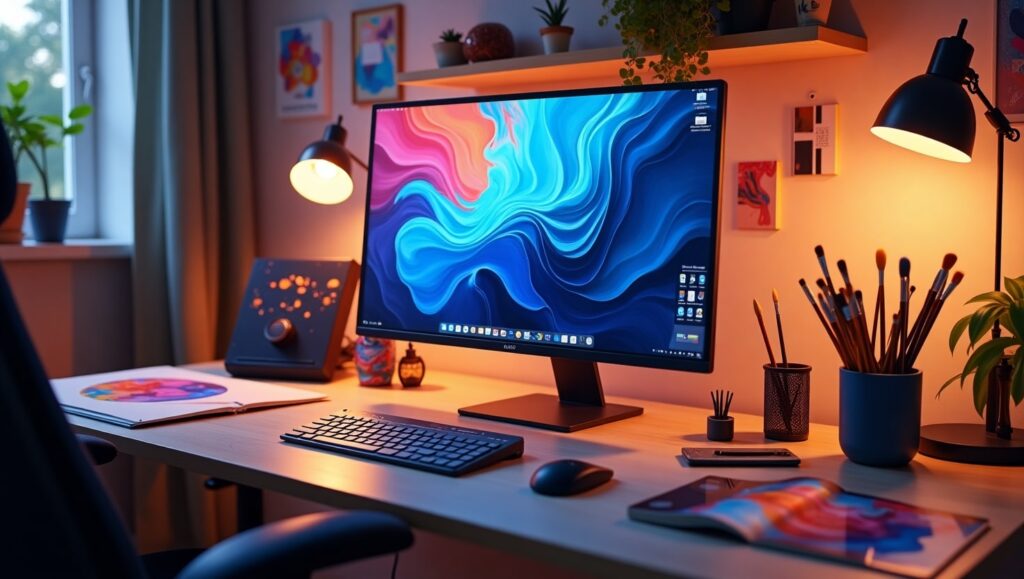
Type: Free (Open source)
Platform: Windows, macOS, Linux
Krita is best suited for digital illustration and painting, but it also offers graphic design tools for layout and composition.
Key Features:
- Brush customization
- Layer management
- Animation support
- Tablet-friendly interface
Why it’s great for beginners: Excellent for beginners interested in drawing and concept art.
10. Desygner – Mobile-Friendly Graphic Design
Type: Free & Paid
Platform: Web, iOS, Android
Desygner is a drag-and-drop graphic tool aimed at social media creators, bloggers, and marketers. It’s one of the easiest tools to use on a smartphone.
Key Features:
- Pre-made social media templates
- Mobile-first design
- Royalty-free image library
- Branding kit support
Why it’s great for beginners: If you’re creating graphics on the go, this is a must-have.
Tips on Choosing the Right Tool
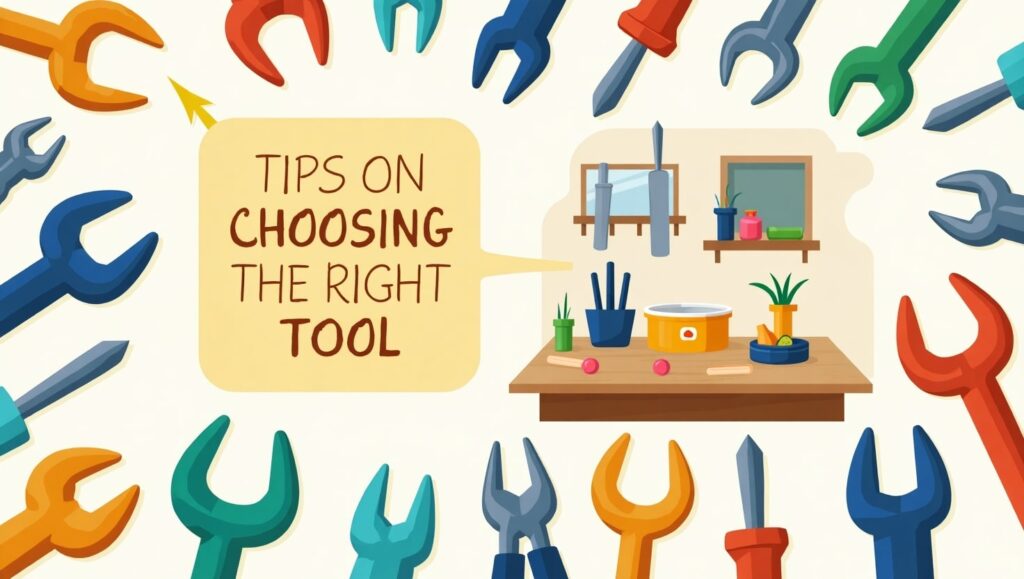
Choosing the best graphic design tools for beginners tool depends on your goals and workflow. Here are a few tips to guide your decision:
- Start Free: Explore tools like Canva, Vectr, and Inkscape to learn the basics without investment.
- Consider Your Goals: If you want to go professional, tools like Adobe Illustrator or Affinity Designer are worth learning.
- Try Before You Buy: Use free trials to test paid tools before committing.
- Use Community Resources: Many tools have active communities, free tutorials, and forums to help you learn faster.
- Match Tool to Task: Photo editing? Use Pixlr. UI design? Try Figma. Logo creation? Go with Illustrator or Vectr.
FAQ
What is the best free graphic design tool?
Canva is the best graphic design tools for beginners widely considered the best graphic design tools for beginners due to its ease of use, professional templates, and accessibility on all devices. For vector design, Inkscape is a top free choice.
Are paid tools worth it for beginners?
Yes, Best graphic design tools for beginners if you’re committed to building a career or serious hobby in graphic design. Tools like Adobe Illustrator and Affinity Designer offer features you’ll eventually need as your skills grow. However, you should explore free tools first to see what suits your style.
Conclusion: Start Simple, Grow Gradually
Every graphic designer starts somewhere. The key is to start simple—best graphic design tools for beginners, explore its features, and grow your skills at your own pace. Whether you begin with Canva, dive into Figma, or experiment with Inkscape, the most important thing is to keep creating.
Once you’re comfortable, consider investing in professional tools that open up even more creative possibilities. With the right tools and consistent practice, you’ll be creating stunning graphics in no time.
Graphics Design
Top 7 Essential Ways to Make T-Shirt Painting Design
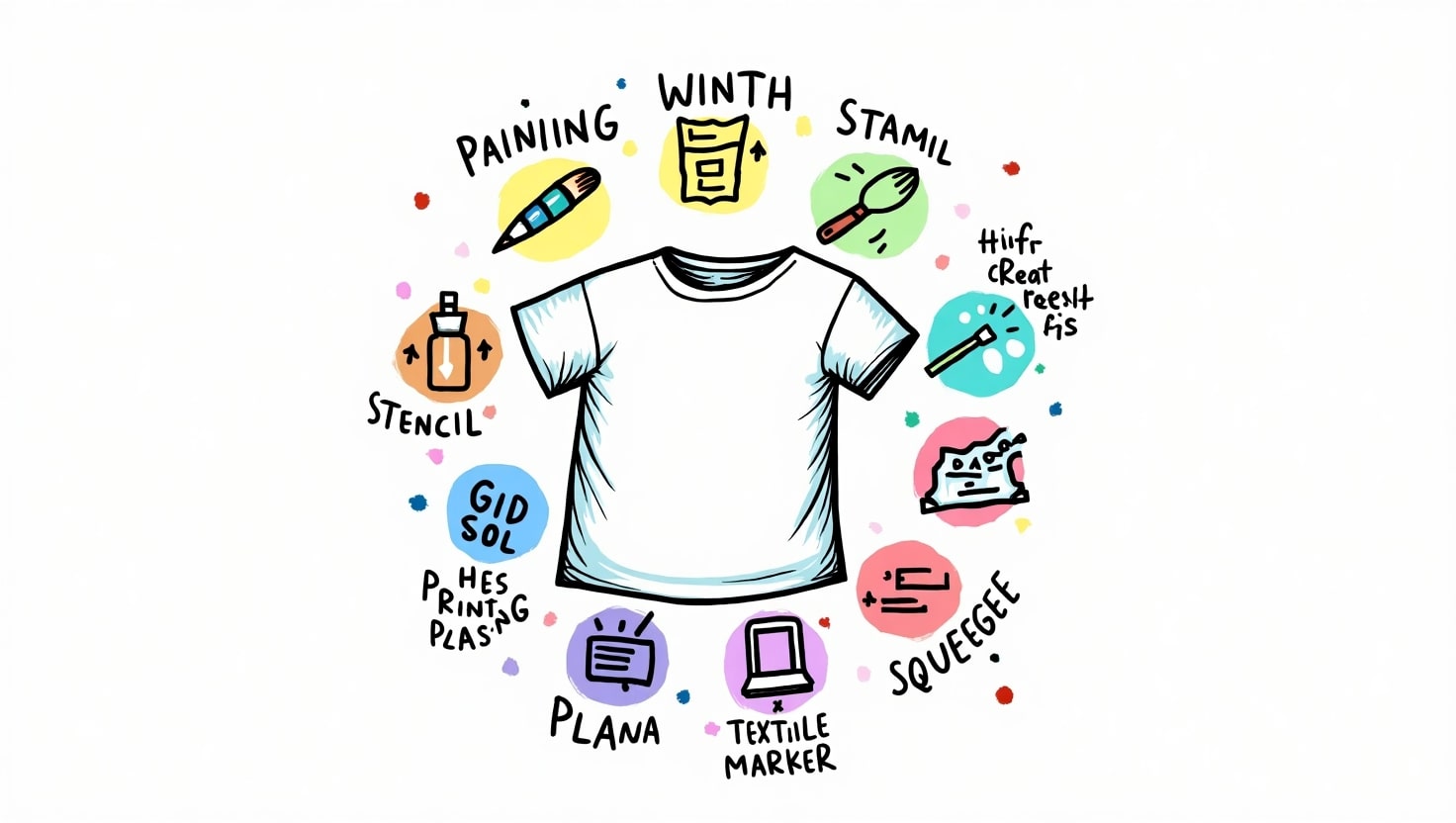
Top 7 Essential Ways to Make T-Shirt Painting Design
T-Shirt Painting Design can be a great tool of creativity or creation of a fashion identity or even a business. T-Shirt Painting can be a gateway to unending crafts no matter whether this would be your first or fourth attempt in painting. In this article, we are going to guide you on the 7 best methods on how to make t-shirt painting design stand out, how to do it, what to use, what style, and some tips on how to make custom t-shirt painting better without fail.
What is T-shirt Painting Design?
T-Shirt Painting Design is a decoration process of painting or ink on a piece of cloth, generally t-shirt, to come up with a unique picture. It is a form of clothing art in which an artist, fashion admirer or hobbyist can express themselves creatively in something that they can use daily. T-shirt painting design can express mood, culture, personality and even be used to champion a cause; miniature paintings to splashes of abstract colors.
DIY trend, sustainability and fashion individuality have rocketed the popularity of the t-shirt painting within the past years. Well, now we are to see the seven most useful techniques that can help you to master this exciting art.
1. Select The Appropriate T Shirt Base and Fabric

A t-Shirt Painting Design is the basis of every magnificent t-Shirt Painting. The choice of the material influences the quality of the adhesion of the paint, the hues of the palette and the durability of the design once washed.
The ideal fabrics of T-Shirt painting design:
- 100 percent Cotton: Trapping moisture is high on the scale and paint adhesion can also be achieved as well.
- Cotton-Poly Blend: Less absorbent and more long lasting.
- Bamboo or Organic cotton: an environmental-friendly and sustainable t-shirt painting design material.
Ensure that the t-shirt has already undergone a process of washing in order to draw away any factory treatment or shrinking. Get the finest painting experience on a smooth, non wrinkly surface.
2. Gather the Right Supplies
Without proper tools, even the most creative ideas for a t-shirt painting design can fail. Here’s a checklist of essential supplies:
Basic Materials:
- Fabric Paint (Acrylic-based or Water-based)
- Fabric Medium (optional, helps paint bond better)
- Paintbrushes of varying sizes
- Sponges or Rollers
- Palette or Mixing Tray
- Fabric Markers
- Pencil/Chalk (for sketching)
- Cardboard Insert (to avoid bleed-through)
These materials ensure your t-shirt painting design stays sharp, professional, and vibrant.
3. Sketch and Plan Your Design
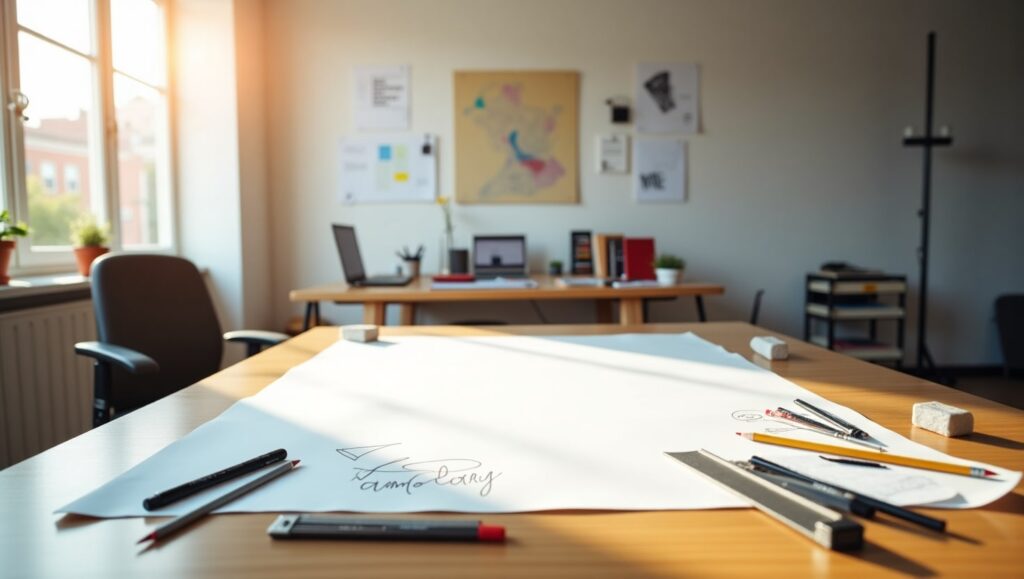
Before you dip a brush into paint, sketch your t-shirt painting design on paper or use a digital mockup tool. Planning is critical, especially for intricate designs.
Tips for Sketching:
- Start with light outlines.
- Consider color placement and negative space.
- Use stencils if you’re aiming for precision.
Planning your t-shirt painting design reduces mistakes and speeds up the painting process. You can even use transfer paper to trace your design onto the fabric if you’re not confident in freehand sketching.
4. Learn Different Painting Techniques
There are multiple ways to apply paint to a t-Shirt Painting Design. Understanding the right technique for your t-shirt painting design will make your artwork more dynamic.
Popular Painting Techniques:
- Freehand Brush Painting:
- Great for artistic expression and detailed artwork.
- Stencil Painting:
- Perfect for logos, patterns, or text. Ensures consistency.
- Sponge Painting:
- Adds texture and gradient effects to your t-shirt painting design.
- Splatter Technique:
- Offers a trendy, modern vibe. Use with contrasting colors.
- Block Printing:
- Involves carving a design into a stamp and repeating the pattern.
Each technique contributes something unique to the final look of your t-shirt painting design. Don’t hesitate to mix methods for a layered effect.
5. Learn to Use colors
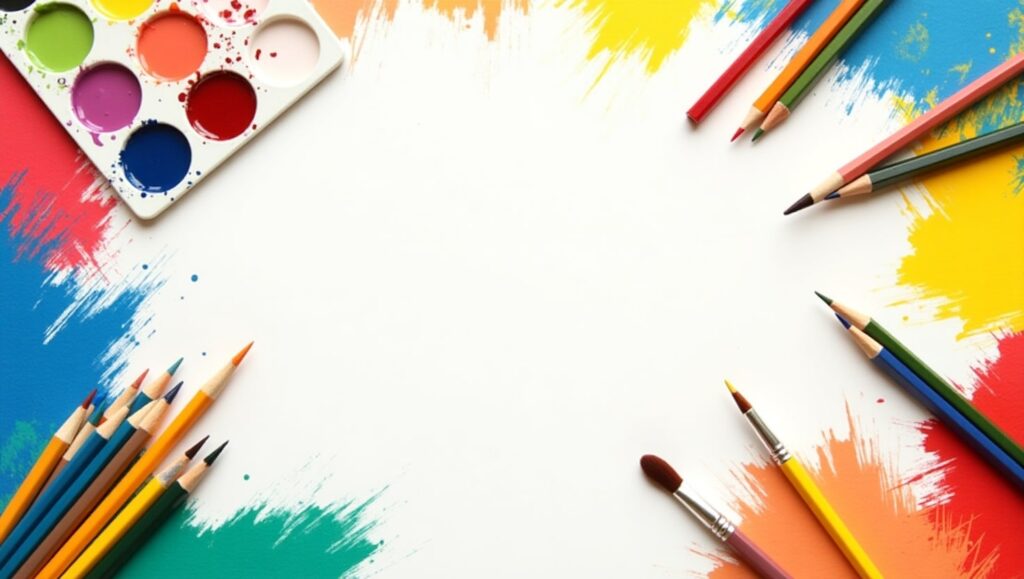
The color theory is very relevant in the area of painting t-shirts. Navigating a basic design with the compulsory color palette can turn a design to a work of art.
Know How to Select Colour:
- Take bold contrast by using complementary colors.
- Similar tints to bring out harmonious vibes.
- Apply white or black to make outlines/highlights.
Bear in mind that not all colors can be similar on textile and paper. Always test a small patch in case you want complete painting of t-shirt.
6. Use Fixing and Heat Fixing Methods
When you have painted your masterpiece that is the time to put the colors on so that they can be washed and worn.
T-Shirt Painting Design: Fixing Methods:
- Ironing: Apply a cloth or parchment paper on the painted area and press using medium heat setting on the iron within 3 to 5 minutes.
- Air-Drying: Leave your t-shirt painting design to dry up at least 24-48 hours.
- Heat Press: professional way of commercial-grade finish.
The paint is then sealed under the heat setting so it does not crack or fade, thus sealing into the fibers of your t-shirt painting design.
7. Care of Your Painted T Shirts
When the t-shirt painting is properly taken care of, then you get a long lasting life of the design and it remains vibrant.
Cleaning & Storing Information:
- Inside out wash in cold water.
- Never use bleach or strong detergents.
- Line dry or tumble low or machine dry.
- Iron inside-out, as required.
Once you have made something really well, you can be sure that your t-shirt painting design will keep shining all through the years.
Some Creative Ideas to Design T-Shirt Painting
Are you short of ideas? The popular t-shirt painting design themes are the following:
Minimalist Quotes
- Nature-based Patterns
- Graffiti and Street Style Painting
- The pop culture and Anime
- Geometric designs
- Motifs Tribal and Ethnic Motifs
- Personalized Name/Initials
The ideas can assist you to stimulate creativity and reach out to the target audience or customers.
The reason T-Shirt Painting Design is ideal with small businesses
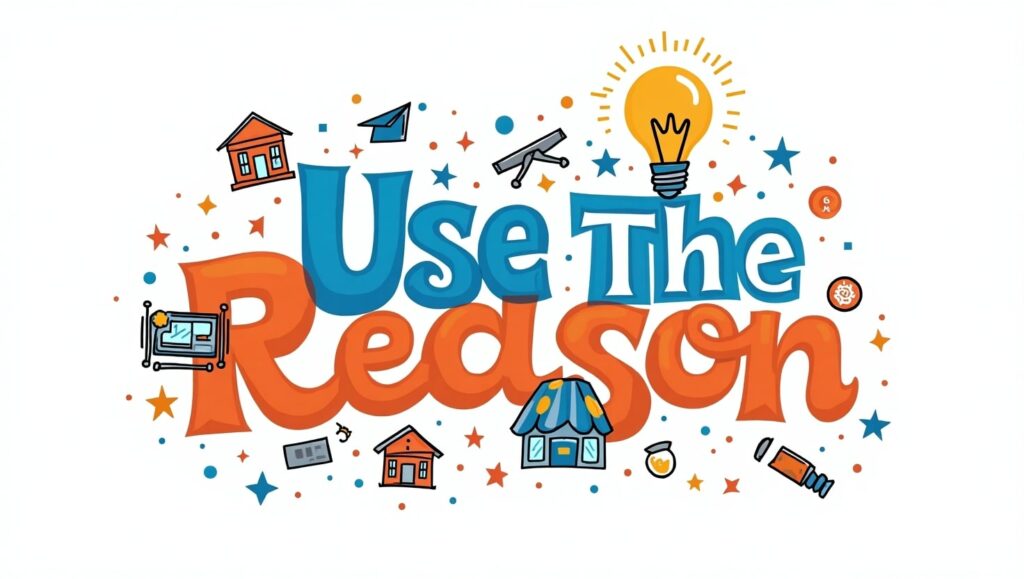
T-shirt painting design is also beautiful since the cost is cheap with high profit margin. These designers, painters, and designers are turning the ability to make money by selling personalized tees either online or in local fairs.
The advantages of T-Shirt painting Design as Business:
- No huge stock-out is needed.
- It is possible to tailor every design to the targeted niches.
- Handmade and green-friendly.
You may even provide customized t-shirt painting design services to such platforms as Etsy, Instagram, or your WordPress online store.
Questions and answers on T-shirt painting design
Q1. What should I use as a medium to paint t-shirt painting design, can I use normal acrylic paint?
Sure but in some fabric medium so that it does not crack and leave a soft finish.
Q2. How do I avoid loosing the paint in the washing?
After getting your paint design on your t-shirt completely dry, always take it and heat set it using an iron or heat press.
Q3. Which is the best color of t-shirt to be used?
T-shirts that are white and light in color are ideal for colored effects, but another to get dramatic effects is to use black t-shirts and use opaque or metallic paints.
Q4. What is the lifespan of painted t-shirt?
Well improvised t-shirt painting design will take a long time even after a lot of washings before it will begin to fade away.
Q5. Are children allowed to do t-shirt painting designs?
Absolutely! Just use paint that is washable and non toxic and monitor them as they set the heat.
Conclusion
The t-shirt painting design can be mastered by all types of artists, hobbyists, and business people. Selecting the appropriate fabric, preparing the design, printing it on, and employing the final heat fix, there are tips and methods to every process, which makes the result a beautiful and lasting t-shirt painting design. These 7 methods will determine what colorful and professional results you would achieve when creating a one-off work of your own or planning to launch a fashion brand.
The more you practice regularly and creatively, the more you will master t-shirt painting designs, and welcoming the world of art and even money.
Graphics Design
Essential Graphic Design Skill List for Freelancers
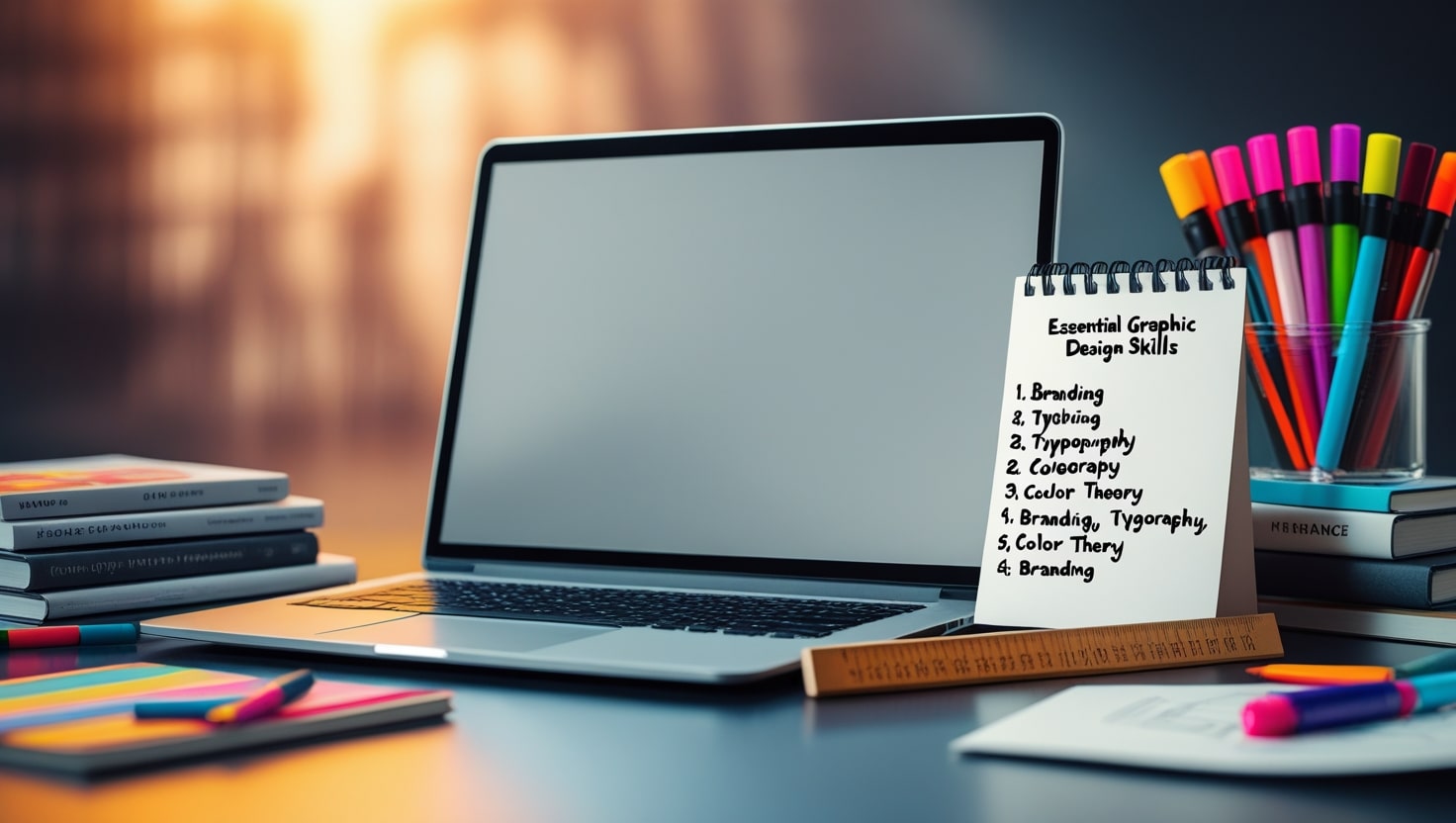
Essential Graphic Design Skill List for Freelancers
Graphic design skill list nowadays, it does not suffice to be a talented freelance designer in the way of the fast-moving creative economy. It demands balanced skill set of graphic designs that entails technical and soft skills. As a beginner or someone seeking to advance their career, being great in the basic graphic design skill list can also pave the way to greater clients, more money, and ultimate success in the relationship.
We will discuss all the skills you have to cover in your graphic design skill set, starting with basic tools and culminating in the skills required by a professional graphic designer. We will also discuss why these skills are important and how to master them as well as how to utilize them to get the right clients and projects depending on your expectations.
1. Graphic Design Skill List Introduction The Graphic Design Skill List is an important attribute of a Graphic Designer.
The graphic design skill list abilities that you have is your toolkit as a freelancer. It comprises all the knowledge about software along with thoughtful planning, interaction and communication with clients, and developing the identity of a brand. The fact that having a structured graphic design skill list list will not only enable you to analyze your capabilities as well as shortcomings, but also offer you easy time to sell your services.
The majority of businesses are heading towards freelance professionals to serve them with creative problems such that a present and relevant list of graphic design skill list will make sure that you stay ahead of others in this highly competitive industry.
2. The issue of acquiring a skill set among freelancers.

In contrast to agency designers, freelancers do not get the luxury of riding on a team. You are the designer, the project owner, the marketer and the communicator. Thus, it is vital to develop a rich and robust skill set of a graphic designer to your independence and development.
Having a comprehensive list of graphic design skill list also creates self-confidence among the clients. It demonstrates that you can also work with an impressive range of assignments: both coming up with graphic design skill list to place on social media and creating a whole brand identity.
3. The Basic Skills required by Every Freelancer in Designing
You should not run with sophisticated tools or some specific designs that you might be familiar with at an early stage. The basic list of the graphic design skill list comprises:
- Design principle (contrast, balance, alignment, repetition)
- Design of composition and layouts
- Visual hierarchy
- Simple form drawing or wire framing
- Thinking and problem solving design
These are fundamental aspects that these skills in professional graphic designing revolve around. In their absence, your visuals might not be coherent or even effective, regardless of their apparent visual attractiveness.
4. High-end Graphic Designing Techniques

When you already managed to master the basics, it is high time to enter some more sophisticated elements of your graphic design skill list set:
- Photo manipulation and editing
- Vector drawing
- Icons design
- Infographic design
- The fine use of layering and masking
Such advanced skills will enable you to take on more involved projects such as packaging design, editorial layouts, or a digital campaign that will increase your worth as a freelancer.
5. The Accommodation Skill list of Graphic Design Software Proficiency

Your knowledge of some major design software is one of the most important elements of your graphic design skills list. As a freelancer you have to feel comfortable with the best tools of the industry:
- Adobe Photoshop: Digital painting and photo editing
- Adobe illustrator: Vector graphic and logo design
- Adobe InDesign: documents/publications with three or more pages e.g. brochures, eBooks
- Figma/Sketch/XD: UI/UX and Web Graphic Design
- Canva: Rapid template-based design Canva can be used to create beautiful templates in very little time.
The more tools you will be able to learn and to expand the list of tools on your set of skills of graphic design skill list the more you become versatile and employable.
6. Skills in Type and Design
Typography is also what it takes to make or break a design. When you combine this knowledge to your graphic design skill list set, then you comprehend:
- Pairing and contrast of fonts
- Space and legibility
- Typographical hierarchical use
- Balance in grids and layouts
This is why freelancers who are experts in typography are mostly recruited when encountered with branding, editorial, and advertising work where text is as equally important as imagery content.
7. Theory and practice in Color
The good design is very dependent on a proper color application. Ensure your skill set in graphic designing has:
- The knowledge of the color modes (RGB vs CMYK)
- Psychology of colors
- the palette making
- Harmony and contrast of color
Clients will usually wish to have their brand colors to elicit certain emotions and practicing color theory will help you add value to your company as a freelancer.
8. Branding and Image Design
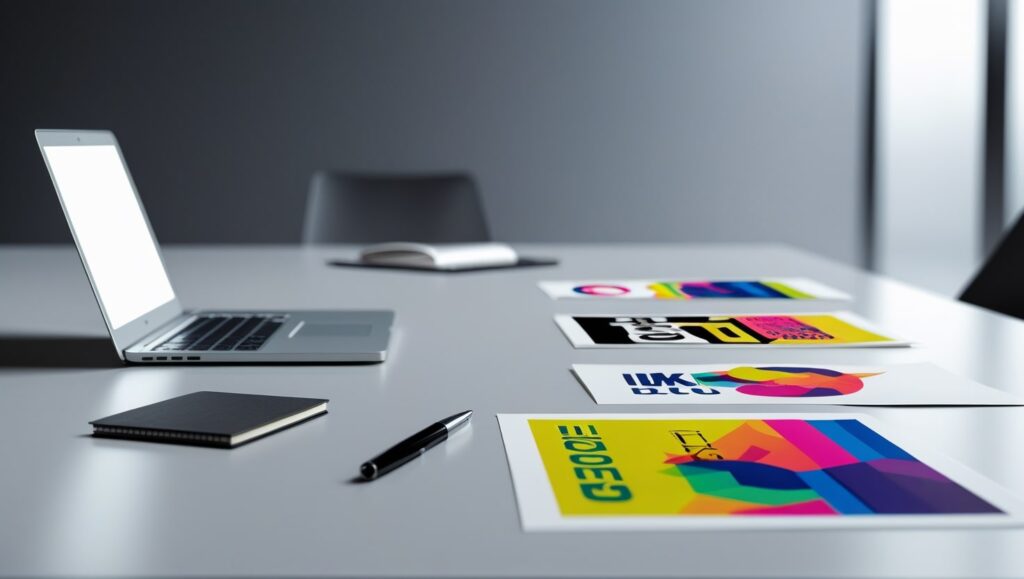
Branding expertise can help a freelancer earn good money on huge projects. To your list of graphic design skill list add the following:
- Logo designing
- Brand strategy and mood boards
- Brand guidelines
- Graphical narrations
Branding identities go beyond creation of logos but include deciphering how a company should communicate in terms of graphics; it is on the platform.
9. UX/UI Designing Skills as a Freelancer
Freelancers capable of providing UX/UI services are usually paid higher. Completing the list of your graphic design skill list with UX/UI means:
- Drawing wireframes and prototypes
- User journey mapping
- Designing mobile-first
- UI Design of the app/ Web
Such competencies are quite desirable with companies focusing more on digital user experience.
10. Motion Graphics and Animation
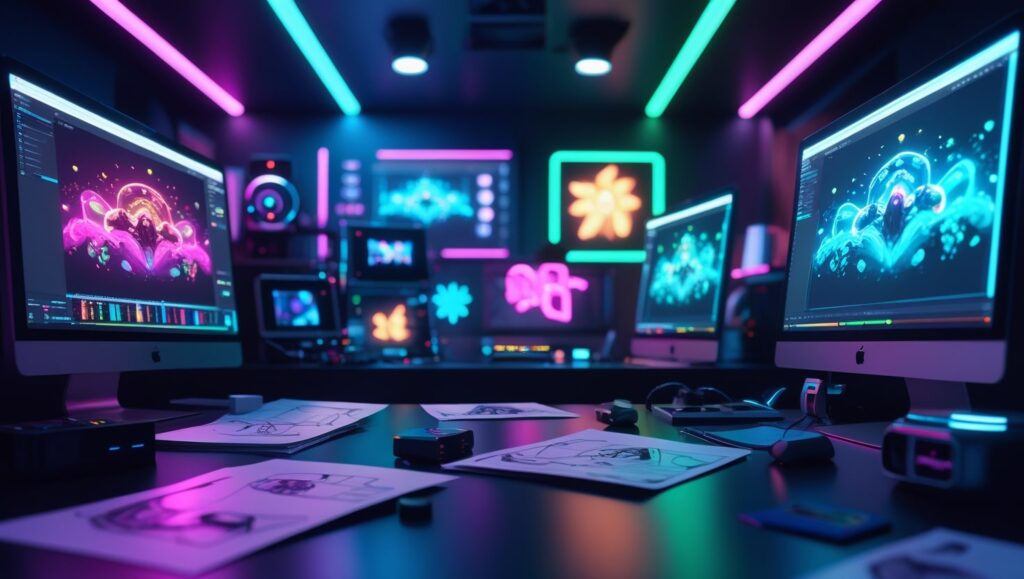
The digital space is taken over by motion. Motion design is something that sets you apart in the list of graphic design skill list. Get to know such tools as:
- Animations will be in After Effects
- Lottie on the web-based animations
- GIF making and video hacks
Even simple motion skills make a still stand, it allows creating a dynamic experience, ideal to share on social media and advertisements.
11. Collaboration and Communication skills
Soft skills are good elements of a graphic design skill list as well. You will have to be able to:
- An excellent skill at explaining things
- Know the needs of clients
- Treat feedback in a professional manner
- Liaise with other artists or marketers
Effective communication leads to the flow of work, improved success of projects and repeat clients.
12. Time and Project Management
Freelancers have to work on different projects. Time management should, therefore, find its place on the list of your graphic design skill list:
- Working with such an application as Trello, Notion, or Asana
- Maintaining due date and revisions
- Invoicing and ability to follow up clients
These are some of the productivity habits that enable you to be professional and you achieve expectations.
13. Marketing Freelance Designer
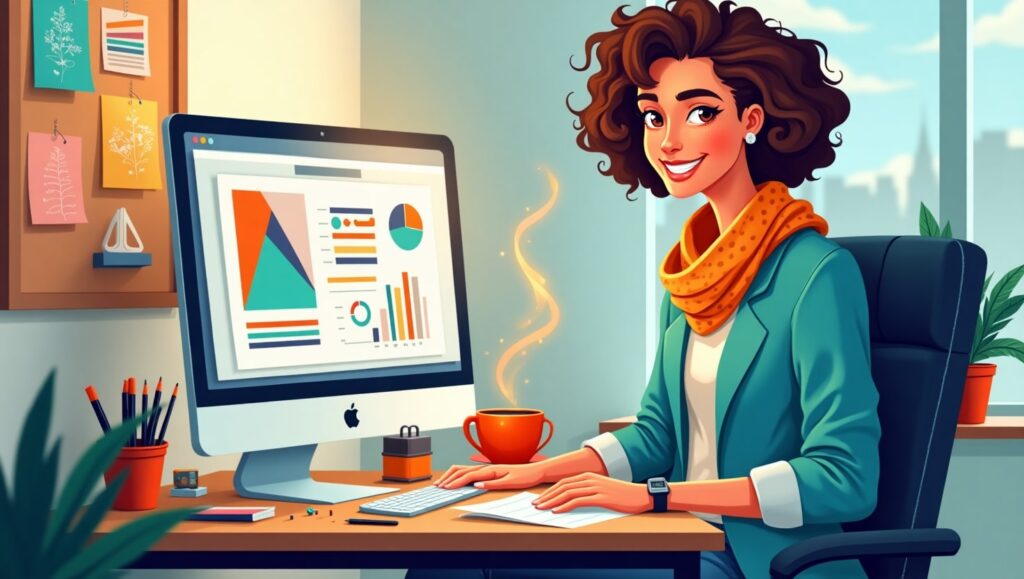
Self marketing is one thing that you never had to write on your list of graphic design skill list, but what you really need to do:
- Creation of a portfolio site
- Sharing work via social media
- Authorship of blogs or case studies
- Social networking on the web
The greatest designers cannot cope, when they are not visible. Marketing converts your talents into money making.
14. Your Application of Graphic Designs List in the Real World

Your graphic design skill list should match the demand in the market. Put your abilities to:
Branding and logo assignments
- Designing of websites
- Digital advertising resources (ads, banners, email)
- Printed resources (flyers, business card)
- e-commerce Designs of products
A variety in the application of your graphic design skill list also enhances your reputation and gets a variety of clients.
15. What are the Ways of Developing Your Skill Set Continuously?
The artistic world is evolving rapidly. Make sure your graphic design skill list is not obsolete by:
- Doing online courses (Skillshare, Coursera, YouTube)
- Research of design fashion
- Doing it every day
- Asking another peer or even a mentor
The best freelancers are those who never stopped learning. Each new skill that you develop can translate to work that is of higher value.
16. FAQs
Q1. What must be in freelance graphic design skill list?
The freelance graphic design skill list must enroll software expertise, design philosophy, branding, constructing, user interface/user experience, commitment management, and organizational communicational proficiency.
Q2. What can I do to add to my list of skills in graphic design?
Continuously expand your list of graphic design skills by taking online courses, working on real-life projects, keeping up with design trends, and learning more through feedback by your mentors.
Q3. What is the importance of a graphic design skill list to freelancers?
It will make you competitive, versatile, and allow you to gain trust by potential clients because it will be evident what you are able to provide.
Q4. Is it possible to freelance when my graphic design list of skills is not very long?
Yes, but it will be limited by what you can do. Begin with the basic skills and slowly increase your freelance career with some extended skills list in graphic design.
Q5. Which skill is the most needed in a list of graphic designs skills today?
The same goes with UX/UI design, motion graphics, and branding opportunities that are highly sought as freelance assignments.
17. Final Thoughts
This is the most valuable resource a freelancer can have a checklist of graphic design skills. Not only will it make your work better, but it increases your confidence and credibility as well. With the combination of technical and soft skills you will become a trustful and multi-tasking designer that clients would not mind hiring again.
You are about to have a fresh start or a long time established and it is your time to look back, improve, and add some new things to your list of graphics design skills. It is a fact that success lies in the hands of those who are well equipped- so develop your talents, present them in a way they are attractive, and keep stretching your creative boundaries.
-
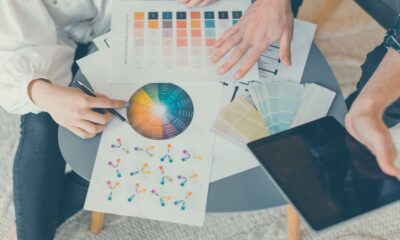
 Graphics Design1 year ago
Graphics Design1 year ago7.Exploring the Importance of Color Theory Charts
-

 Graphics Design10 months ago
Graphics Design10 months ago10 Stunning Gradient Design Trends You Need to Know in 2024
-

 Graphics Design1 year ago
Graphics Design1 year ago15.The Importance of Effective Flyer Design in Marketing
-
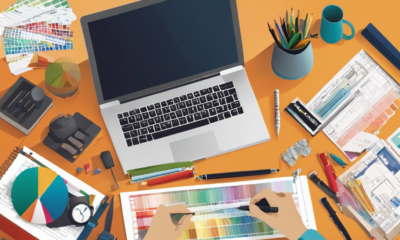
 Graphics Design1 year ago
Graphics Design1 year ago14.Mastering the Art of Print Design: Tips and Tricks
-
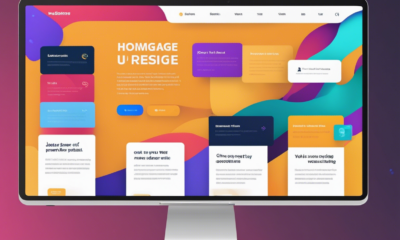
 Graphics Design1 year ago
Graphics Design1 year ago10.The Latest Trends in Web Design and Development
-

 Graphics Design1 year ago
Graphics Design1 year ago29.Retro Design Is Making a Comeback in Modern Spaces
-
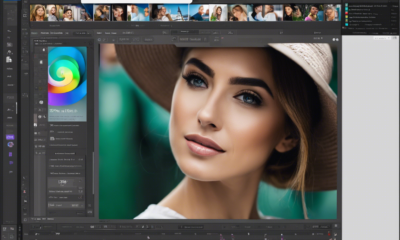
 Graphics Design1 year ago
Graphics Design1 year ago13.Exploring the Latest Trends in Photo Editing Software
-

 Graphics Design5 months ago
Graphics Design5 months ago2025 Logo Design Trends: What’s In, What’s Out?





registrovat se na binance
December 22, 2024 at 5:35 am
Thanks for sharing. I read many of your blog posts, cool, your blog is very good.